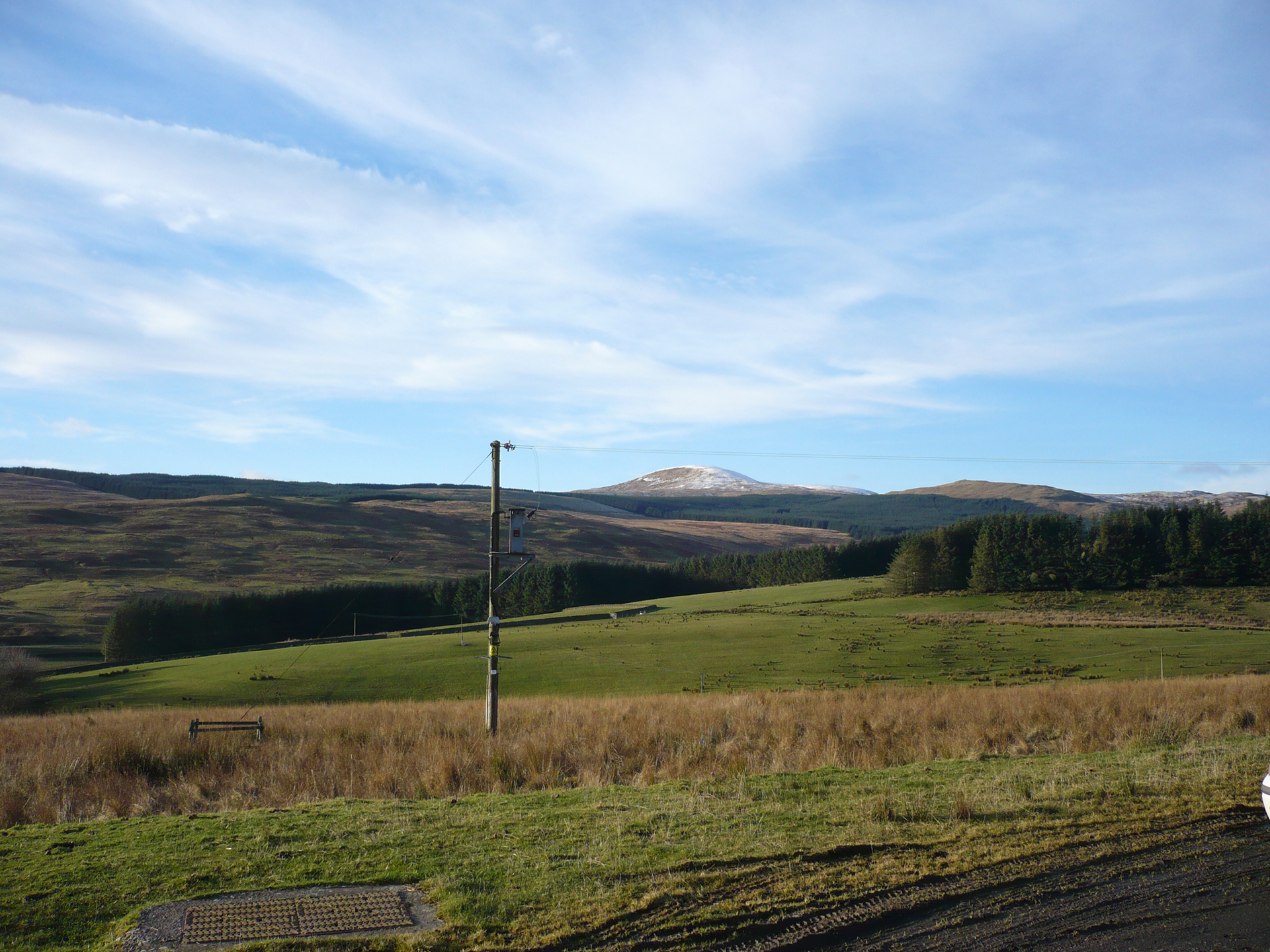Summary
Eskdalemuir seismic array (EKA) acts as an auxiliary seismic network for the International Monitoring System (IMS). The station was established in 1962 making it the longest operating steerable seismic array in the world. There have been a number of upgrades to the station since its installation.
Güralp Systems has been managing EKA since 2001. Beginning in 2007, Güralp undertook large scale renovation work to the stations' infrastructure and equipment. The site consists of 20 pits arranged in an 18 km long linear-cross array with a central recording facility and seismic vault.
The full array was upgraded to fibre communications with redundant cores, enhanced power distribution and a central intersection hut installed where the linear array paths cross. GPS for timing is located in this hut, timing is then broadcast to the array elements via two fibre optic multiplexed channels.
A central power distribution facility maximises the data reliability and minimizes power loss from the long cable runs. The 20 pits within the array were upgraded to contain a single-component, broadband, weak motion 3V seismometer.
Güralp Systems has been managing EKA since 2001. Beginning in 2007, Güralp undertook large scale renovation work to the stations' infrastructure and equipment. The site consists of 20 pits arranged in an 18 km long linear-cross array with a central recording facility and seismic vault.
The full array was upgraded to fibre communications with redundant cores, enhanced power distribution and a central intersection hut installed where the linear array paths cross. GPS for timing is located in this hut, timing is then broadcast to the array elements via two fibre optic multiplexed channels.
A central power distribution facility maximises the data reliability and minimizes power loss from the long cable runs. The 20 pits within the array were upgraded to contain a single-component, broadband, weak motion 3V seismometer.
Map showing location of Eskdalemuir, United Kingdom
Specialist instrumentation
Hybrid response:
Three hybrid, three-component seismometers were commissioned at the beginning of 2017 to add redundancy to the array. To utilise the site characteristics of the Eskdalemuir array, a hybrid response for the three component seismometers has been designed. This response follows the NLNM to minimise the effect of site noise whilst maximising recording at long periods without the sensor clipping. This system has improved high frequency resolution over the velocity response. Hybrid ‘3T’ seismometers were installed at the extremities of the array as well as within the array vault, located 1 km east of the recording laboratory.
3V (Vertical) Component Sensors:
The array seismic pits are fitted with a single component ‘3V’ sensor connected to a DM24 digitiser and acquisition system with authentication. This is paired with a power supply module, lightning protection and fibre optic transceivers. To meet IMS specifications the 3V sensors have been built with a flat acceleration response from 20 s to 50 Hz. Original passive Wilmore Mk2 sensors continue to run within the array to provide an overlap with the Güralp feedback sensors. The feedback seismometer provides enhanced frequency range, sensitivity and stability of respons
Enhanced Data Monitoring
During the EKA upgrade, layers of backup power systems were installed to provide redundancy to the array. Due to battery lifespan, the battery backups are checked annually and replaced when necessary. The fibre optic communications restricts the effects of transients along the cabling. Power is fed to the seismic sites through a charge regulator, fitted with transient protection.
To enhance data quality control Güralp developed alarm software specifically for EKA called ArrayMon. ArrayMon calculates a running ‘mean’ average of the signal amplitude for each channel. By averaging the mean channel amplitudes it provides an array noise average. The array noise average changes consistently with weather patterns, seismic events etc. We can use the array average to determine single elements in the array which are showing lower or higher than average amplitudes, immediately identifying elements with performance issues. Further, in order to ensure coverage is maintained, a voltage monitoring system was implemented in ArrayMon, this system notifies the management team via SMS when the main power system has failed due to natural events, such as lightning strikes.
EKA has recorded a range of seismic signals from an array of sources. Including, on 3rd October 2015, a marine airgun from a seismic survey in the North Sea close to the coast East of EKA, instigated by the UK Oil and Gas Authority.
In addition, as a result of the station upgrades and new technologies, 99.9% of information is streamed in real time. In recent years our seismometers have picked up the sonic boom from Russian jets in UK airspace and detected underground nuclear tests from North Korea.
To enhance data quality control Güralp developed alarm software specifically for EKA called ArrayMon. ArrayMon calculates a running ‘mean’ average of the signal amplitude for each channel. By averaging the mean channel amplitudes it provides an array noise average. The array noise average changes consistently with weather patterns, seismic events etc. We can use the array average to determine single elements in the array which are showing lower or higher than average amplitudes, immediately identifying elements with performance issues. Further, in order to ensure coverage is maintained, a voltage monitoring system was implemented in ArrayMon, this system notifies the management team via SMS when the main power system has failed due to natural events, such as lightning strikes.
EKA has recorded a range of seismic signals from an array of sources. Including, on 3rd October 2015, a marine airgun from a seismic survey in the North Sea close to the coast East of EKA, instigated by the UK Oil and Gas Authority.
In addition, as a result of the station upgrades and new technologies, 99.9% of information is streamed in real time. In recent years our seismometers have picked up the sonic boom from Russian jets in UK airspace and detected underground nuclear tests from North Korea.







